Nature is weird. But conservation is weirder.
When scientists need to save an endangered species, sometimes the solution is straightforward: protect habitat, reduce threats, or stop overfishing. But sometimes, conservation requires that you built a robot, search for poop, or devise a seemingly endless variety of techniques to collect animal semen.
Below are some of our favorite stories from the (weird) annals of conservation, and we hope you’ll share yours in the comments below.
-
Spying on Sage Grouse with Robots
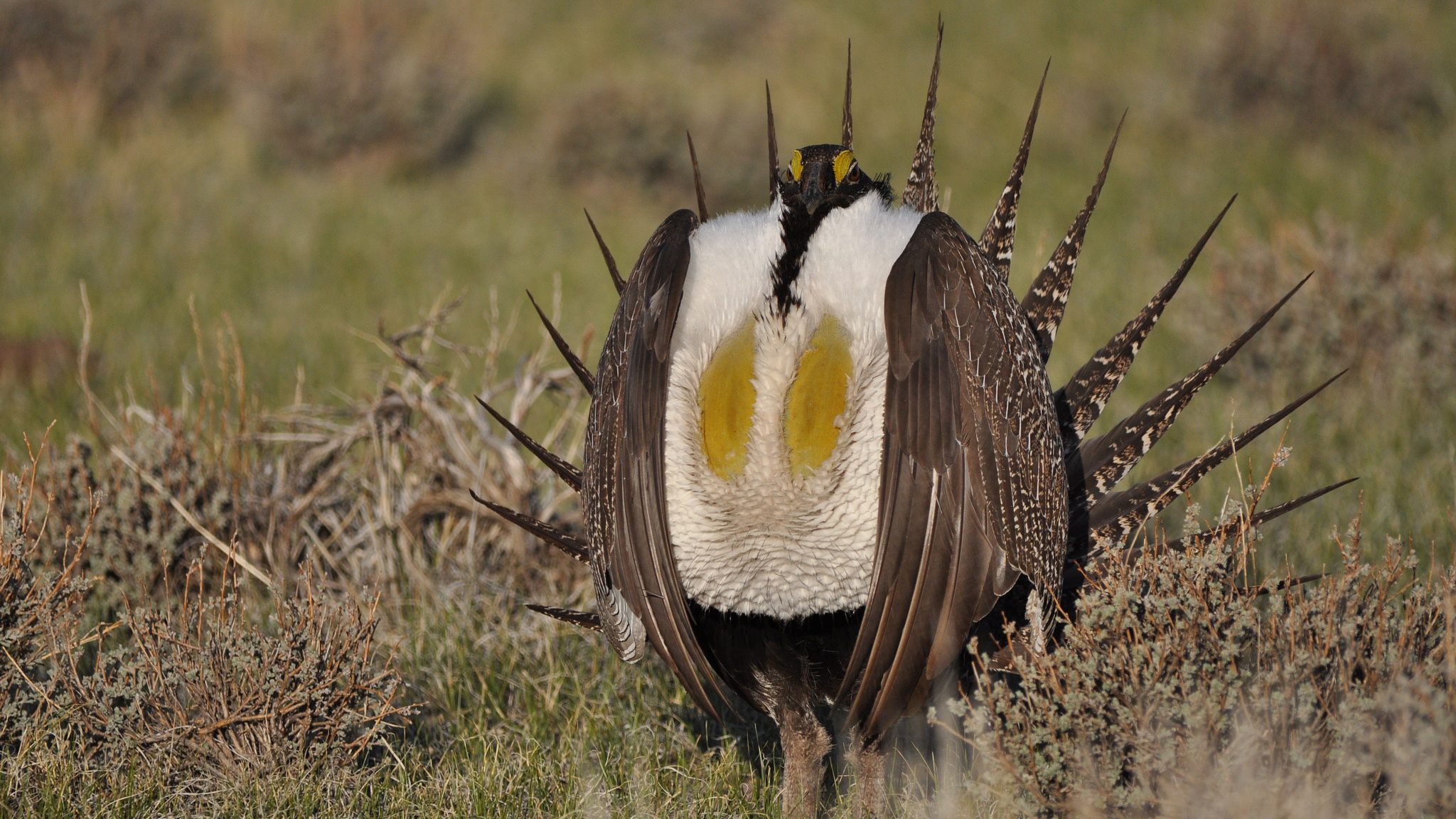
Photo © US Department of Agriculture / Flickr Sage grouse breeding is quite a show: males strut around the lek, spikey tails raised, making vaguely electronic bubbling noises by undulating their bright yellow throat sacs. Enticing. But if you want to study grouse courtship behavior up close, you need a way to infiltrate the lek without disturbing the birds.
Enter the grouse robot.
By driving a remote-controlled female grouse robot into the lek, researchers at the University of California, Davis are studying how males adjust their feather swishing, vocalizations, and strut to the presence of a female bird. Scientists are also using the grouse robots to study if noise from oil and gas development affects grouse mating.
Grouse aren’t the only bird robots around: scientists are using baby penguin robots to collect data on emperor penguins, while others are using robotic owls to study if different bird species understand each other’s alarm calls.
-
Chucking Amphibian Sausages Out of Helicopters
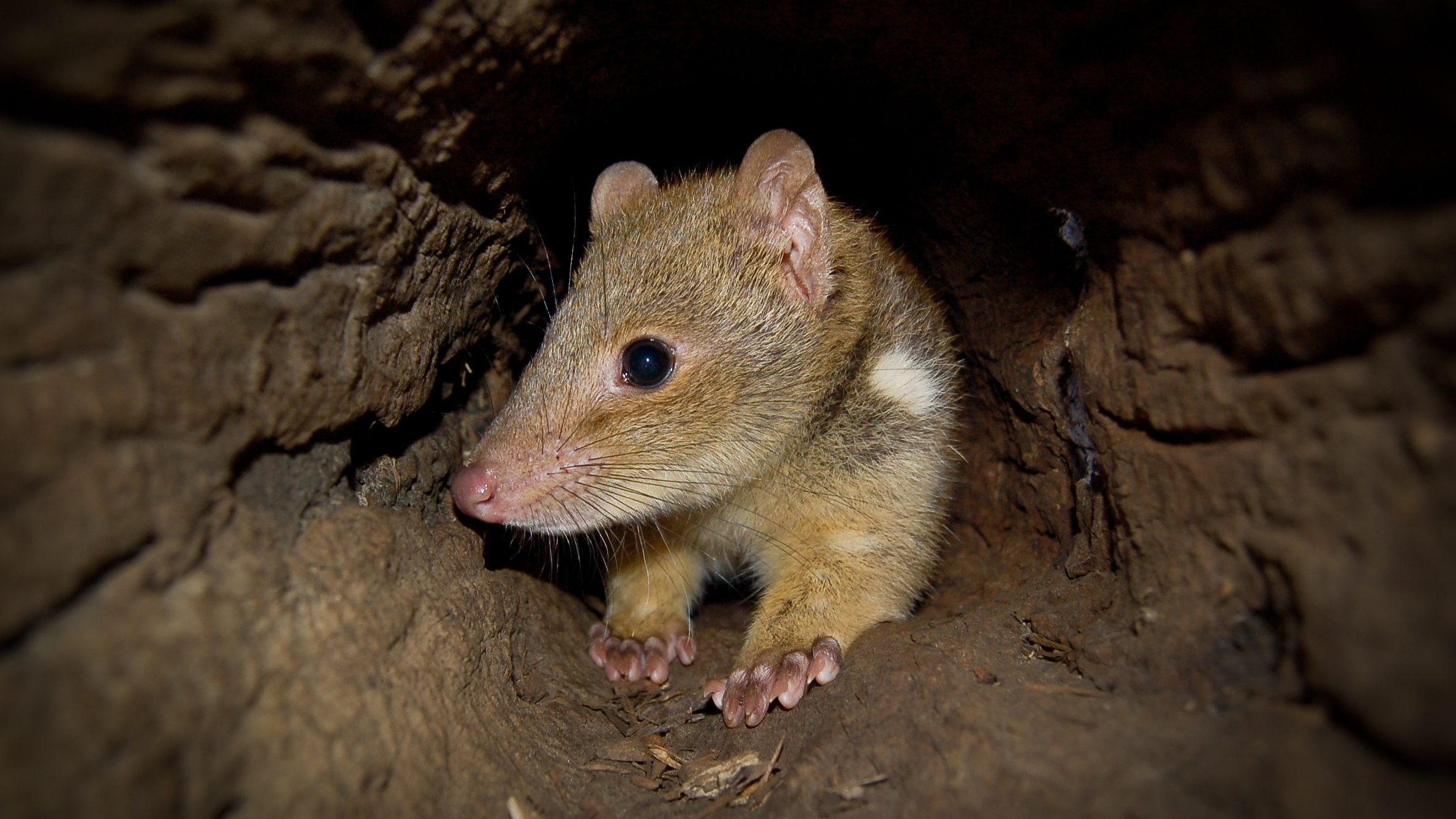
A northern quoll Photo © Brooke Whatnall Scientists and wildlife managers are teaching endangered Australian wildlife to steer clear of poisonous toads by making sausages from toad legs, lacing them with nausea-including chemicals, and chucking them out of helicopters. Really.
Invasive cane toads are poisonous, which is bad news for the carnivorous northern quoll. Already beset by widespread population decline, the quolls are at risk of dying in massive numbers as the cane toads expand their range westward through northern Australia’s Kimberley region.
Luckily, quolls are smart. If they eat a toad and get really sick, they learn to avoid toads in future (as long as they don’t die that first time.) So by deploying toad sausages laced with nausea chemicals ahead of the toad’s invasion, ecologists at the Australian Wildlife Conservancy hope they can teach the quolls that cane toads are bad news. (Want more toad sausages? Read the full Cool Green Science story here.)
-
Designing a Semen-Collecting Helmet & Bird Perfume
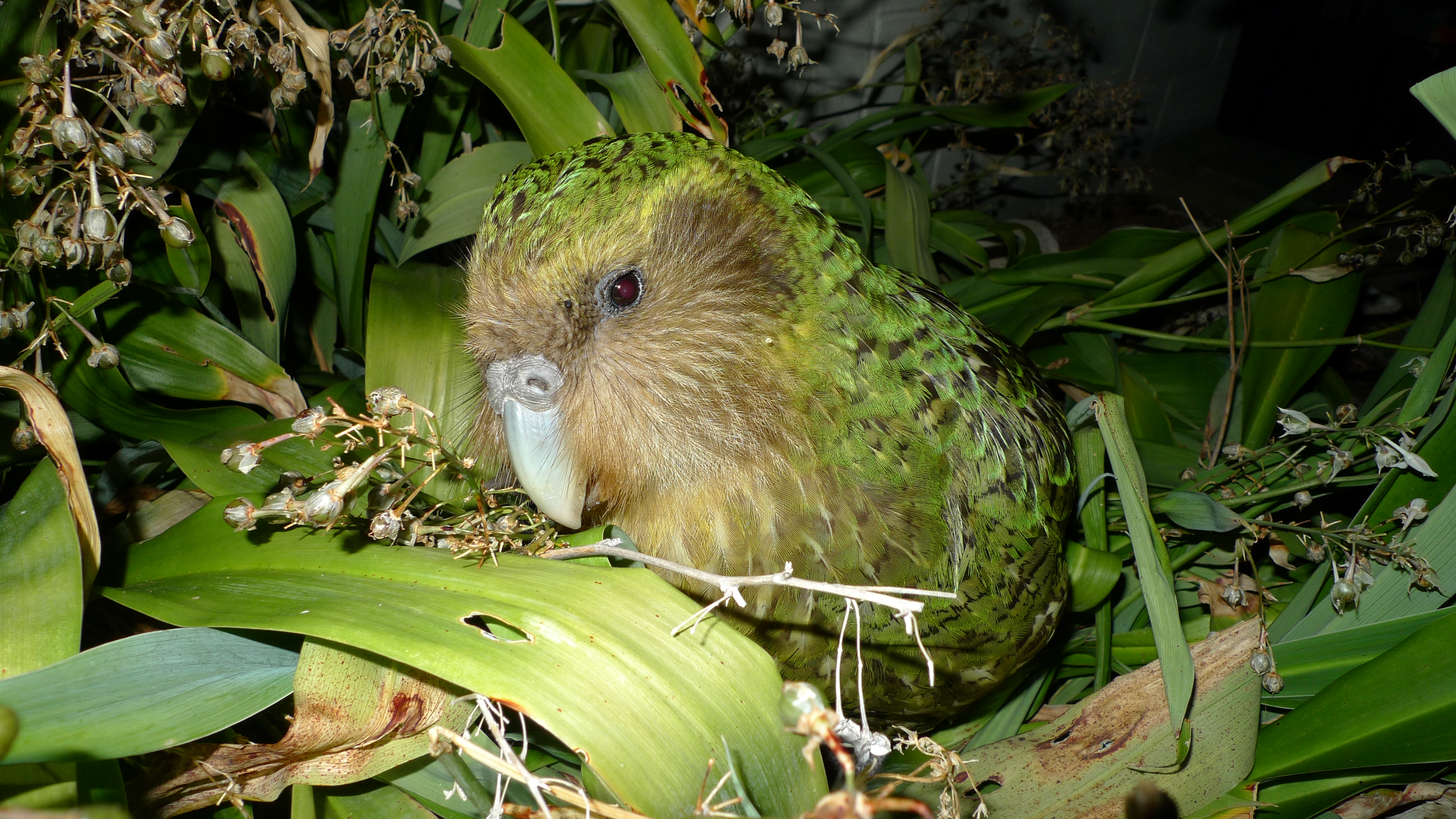
Sirocco the kakapo looks for love in all the wrong places. Photo © Department of Conservation / Flickr Would you let an endangered bird mate with your head?
Meet the kakapo: a flightless, nocturnal, chunky 8-pound parrot from New Zealand. Formerly found throughout New Zealand, kakapos were nearly wiped out by feral cats and are now restricted to only four small, offshore (and predator free) islands.
To demonstrate their reproductive fitness, male kakapos toddle up a mountain, dig a hole in the dirt, and then “boom” into it for up to 8 hours straight. These low-frequency calls can travel up to 5 kilometers. Upon hearing this enticing serenade, female kakapos have to clamber through the forest and up the mountain to find the males.
Ridiculous at the best of times, this mating strategy is especially ineffective when there are only about 100 birds left. So to help bolster genetic diversity and conserve the species, Kakapo Recovery started a captive breeding program. They noticed that some males were vastly more popular than others, and realized that is had something to do with how those males smelled. So researchers from Massey University are using a gas chromatograph mass spectrometer to analyze feathers from the successful males, in the hopes of figuring out just why these males have such scent appeal and, perhaps, developing a synthetic kakapo “perfume” to improve captive breeding success.
Speaking of breeding… one wild (but hand-raised) kakapo, Sirocco, developed an unfortunate habit of attempting to mate with people’s heads. Don’t believe me? Watch filmmaker Mark Carwardine get “shagged by a rare parrot” as actor Stephen Fry looks on.
Trying to make the best of an awkward situation, the Kakapo Recovery staff improvised a special helmet that would collect Sirocco’s semen. Unfortunately, Sirocco prefers seducing helmet-free heads, and he now receives special behavioral training to teach him to redirect his urges toward a stuffed owl puppet.
-
Teaching Rescue Dogs to Sniff Out Wildlife Scat
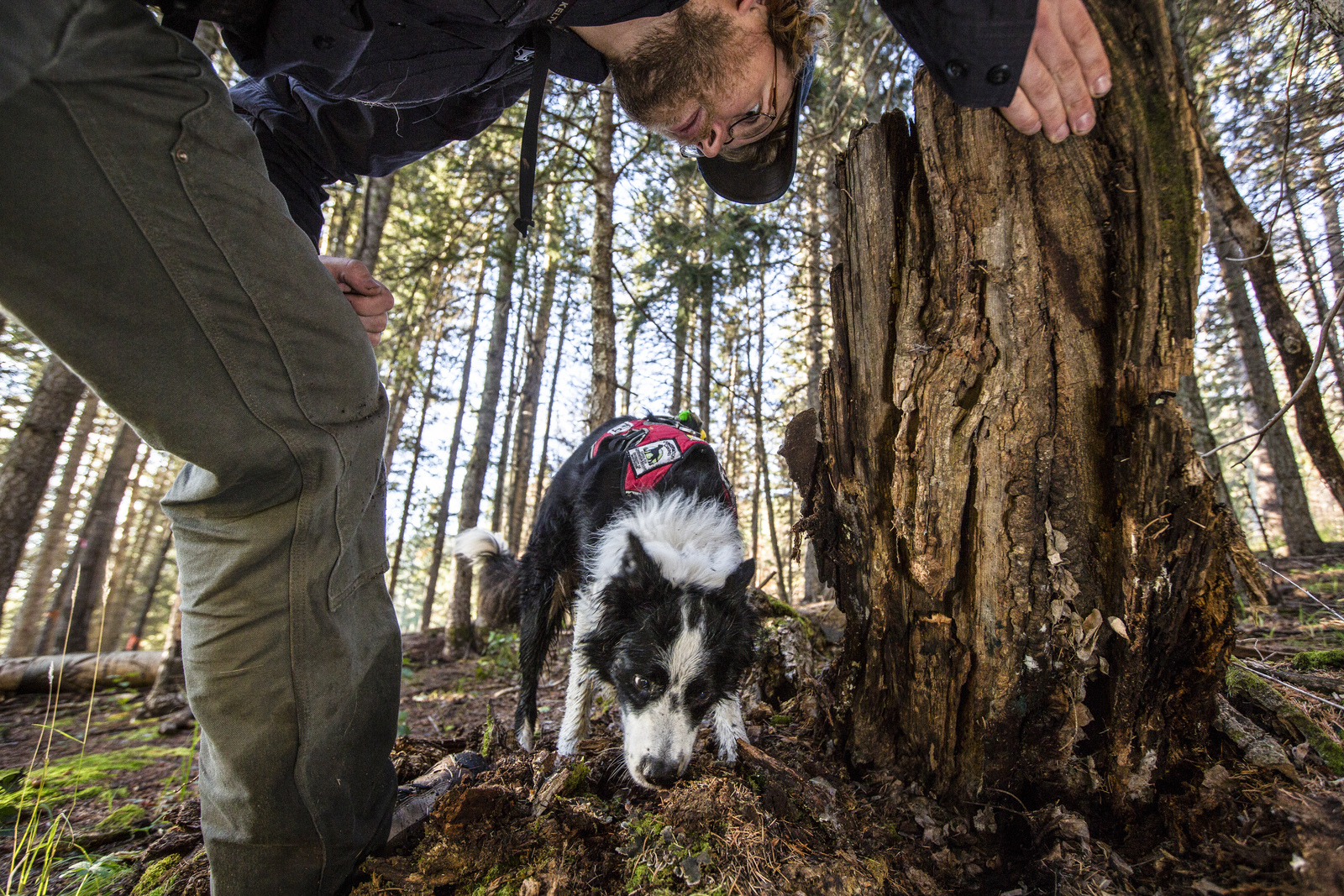
Frehly checks out a log for salamanders in New Mexico’s Santa Fe National Forest. Photo © Karine Aigner Looking for an easy, cheap, non-invasive way to get DNA from endangered species? Be prepared to get your hands dirty. And play fetch.
Conservation Canines, at the University of Washington, trains rescue dogs to sniff out the scat of endangered species, from tigers to orcas to giant anteaters. And why exactly do conservationists want poop? Scientists can use scat to determine the species and sex of an individual animal, and to estimate population size and distribution over a landscape. An animal’s scat (and the hormones and other chemicals within) can also help determine if an animal is breeding, exposed to toxins, or has a strong immune system.
And these pups don’t just sniff out poop: dogs at similar programs have been trained to locate nests, eggs, carcasses, and even live animals. In New Mexico, The Nature Conservancy teamed up with two dogs, Sampson and Frehley, to sniff out endangered Jemez Mountains salamanders.
-
Dressing up in Whooping Crane Costumes
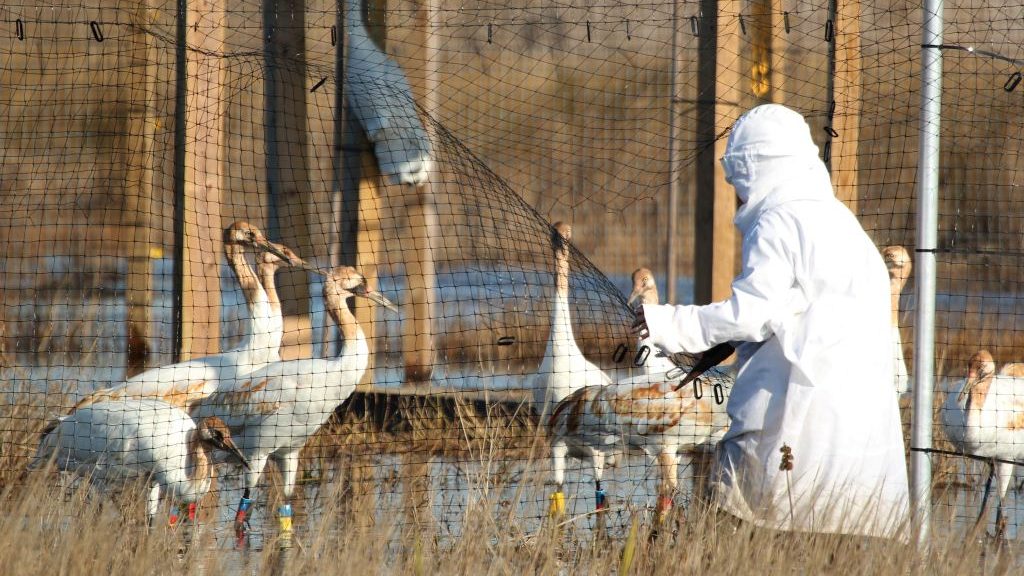
Sara Zimorski in a Whooping Crane costume. Photo © U.S. Fish & Wildlife Service / Flickr We all know the story of the ugly duckling, where a little swan chick gets really confused and think’s it a duckling. Cute children’s story aside, imprinting is a real problem for conservationists raising captive-born critters for eventual release back into the wild. But caretakers at the International Crane Foundation came up with a seemingly silly but effective solution: dress up like whooping cranes.
Caretakers don all-white costumes that look like a bizarre cross between a spacesuit and a Halloween ghost getup whenever they are around the birds. Young chicks are reared in an enclosure with a stuffed adult crane and learn to forage for food with a costumed caketaker with a fake bird-head for an arm. Staff even help the juvenile birds learn to fly by running through the marshes flapping their arms, er, wings. (Check out more photos here.)
It looks ridiculous, but sacrificing your dignity isn’t a lot to ask when the fate of a species is at stake. And similar techniques have been used for other species, including pandas and California condors.
-
Electroejaculating Just About Everything

Baby cheetahs come from where? Photo © Tobi 87 / Wikimedia Commons Electro-what?
We’ll spare you the suspense: conservationists around the world are trying to breed threatened and endangered species to help save them from extinction. But animals are picky, zoos aren’t romantic, and sometimes the best genetic mate is thousands of miles away. (Or is roaming the wild.)
So zookeepers in need of semen take a direct approach: they insert a specialized metal probe into the rectum of the unfortunate animal, send electrical impulses to the nerves responsible for ejaculation, and voilà: essence of endangered whatever.
Bizzare? Yes. Undignified? Yes. Better than extinction? Absolutely.
Electroejaculation has helped breeding programs for cheetahs, flying foxes, Siberian tigers, black-footed ferrets, African elephants, giant pandas, and many, many other species. (For more on how electroejaculation works, check out this great article by Jason Bittel.)
-
Killing Coral-Eating Starfish with Robots
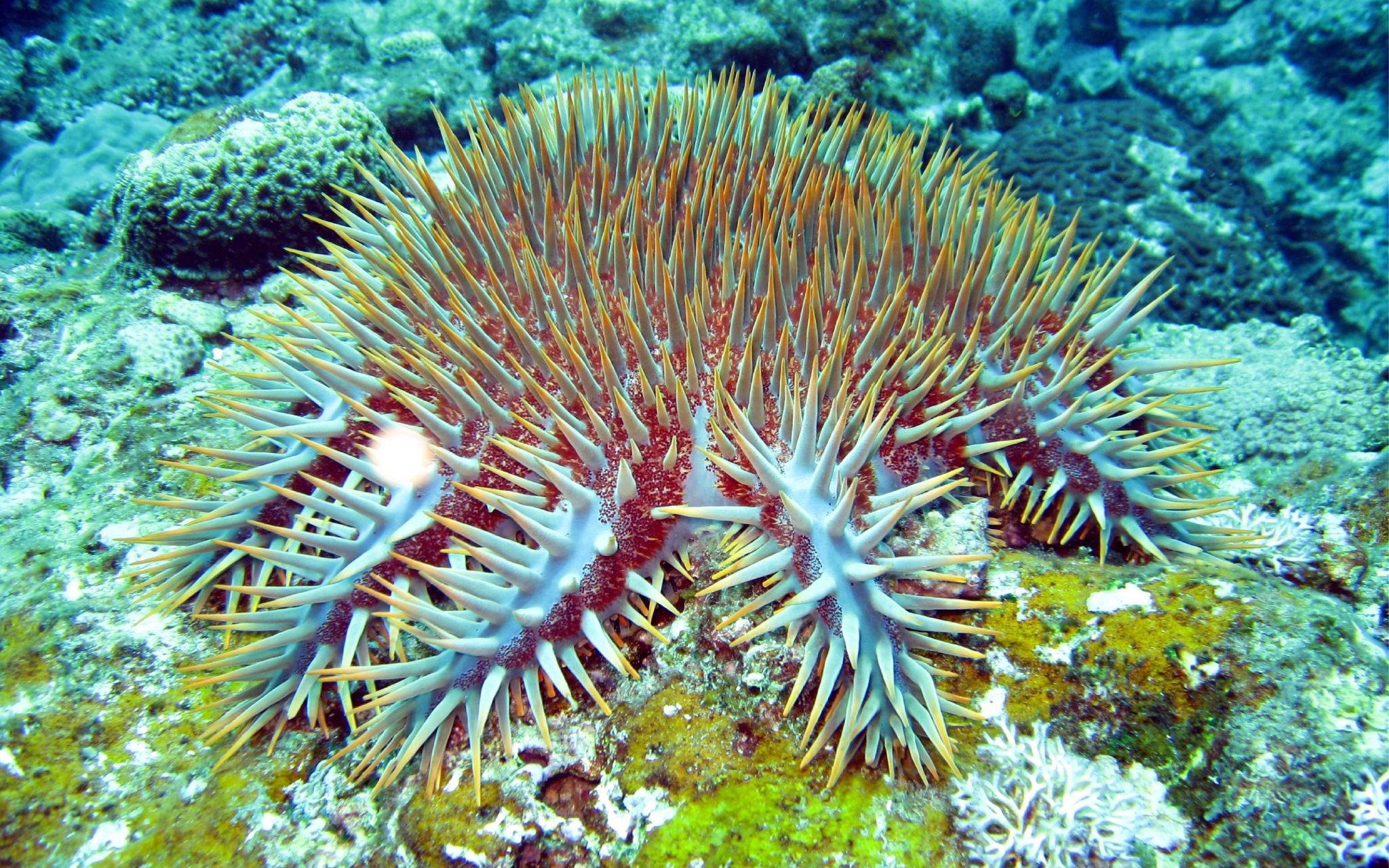
A crown-of-thorns starfish. Photo © Kenneth Taylor Jr / Flickr We all know that Australia’s Great Barrier Reef is in trouble from climate change, overfishing, pollution. But you might not have heard of another sinister threat: crown-of-thorns starfish.
Yes, starfish. A naturally occurring species on the reef, populations of this particular starfish have exploded in recent years thanks to nutrient runoff from agricultural production. Starfish eat coral, and the unprecedented starfish populations are eating away at the reef faster than it can regenerate. Coral cover on the reef has declined by about 50 percent over the last 30 years, and scientists estimate that crown-of-thorns starfish are responsible for almost half of this decline.
Thankfully, conservationists have now invented the ultimate starfish-destroying machine. We’re not kidding. Created by the Queensland University of Technology, the COTSbot is a starfish-killing robot that will patrol the reef, searching out starfish with a custom-trained visual detection system. When it finds one, the robot kills by thrusting out a robotic arm and injecting the starfish with bile salts. Be afraid, starfish, be very afraid. (Read more about the COTSbot here.)




Great piece of article. Here i have mentioned about a endangered species knows as dugong. http://gyanpro.com/blog/dugong-the-sea-cow/
When I taught, even my kindergarteners knew that a sea star is NOT a fish – that it does not have bones or any other fish characteristics. It is sad to see that an outstanding national conservation and teaching magazine mis-uses the term “starfish” – and you are SO good about bison/buffalo!!
When we went to the “Bahamas”, we went to a gathering where they needed a “Volunteer”. I “Volunteered”. They wanted to teach how a “Scorpion” and “Tarantula” react with one another.
They put both on top of me as I stood. I did not know once I volunteered what they were going to do.
I was not scared. They let the two creatures walk and they taught the others how one reacted with the other using me as the ground.
Nice article
JCH